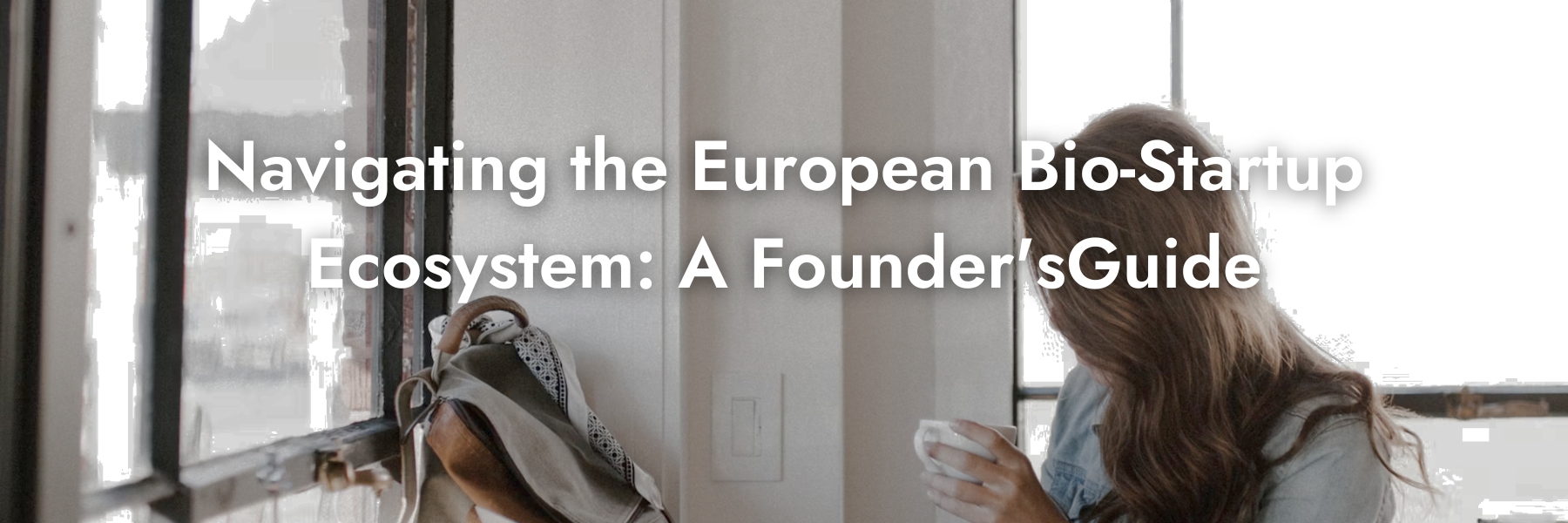Navigating the European Bio-Startup Ecosystem: A Founder’sGuide
The European bio-startup scene is a mosaic of invention, challenge, and opportunity where entrepreneurial spirit meets modern science in settings buzzing with activity. Over $54 billion financed over 1,936 deals in just the first half of 2024 indicates a startling 102% year-over-year rise.1 At the core of this ecosystem are energetic innovation hubs, notably in the UK, Germany, and Switzerland, home to leading academic institutions, research labs, and significant incubators and accelerators.2 Compared to the United States, Europe generates over double the volume of scientific publications, and a good share of worldwide biotech patents originate here.3
For every startup, but especially in the European market with its special mix of opportunity and challenge, growth and achieving scale are guiding stars. Based on my experience closely dealing with startups and SMEs, the most important obstacle these businesses encounter is a delicate balancing act between regulatory compliance, fundraising and collaborations with local institutions and experts. Success in this industry depends on a multimodal approach that needs to adeptly navigate all of its elements.
Why the European Market Behaves as It Does
So, what drives the unique dynamics of the European bio-startup market?
To start, the European regulatory environment is arguably the most renowned. Each EU member state enforces its policies despite attempts to harmonize health technology assessments (HTA) across Europe, therefore generating a heterogeneous environment that requires careful regulatory preparation from the outset.2,4 For instance, a startup creating a novel gene therapy with EU aspirations must navigate both the EMA’s centralized procedure and individual national HTAs. Following Brexit, the UK created its own regulatory system, led by the MHRA and NICE, which contains novel features such as the Highly Specialised Technologies Programme for quicker evaluations and a severity modifier for cost-effectiveness assessments. This difference obliges startups to use different registration and compliance approaches.5
For businesses with limited resources, especially, the intricacy of the EU regulatory framework may extend deadlines and escalate costs. However, unlike the more isolated and smaller UK segment, the possible reward consists of access to a large, unified market.
The second most notable aspect is the cautious investing environment. Usually more risk-averse than their US counterparts, European investors choose projects with clear success potential and little risk. Startups following this strategy find themselves mostly dependent on non-dilutive financing sources such government loans and EU subsidies.6 These funding sources impact the growth path of European bio-startups in unique ways even while they offer necessary early-stage money.
Similarly more orientated on risk reduction than on encouraging high-risk, high-reward technologies, are public funding policies in Europe. This conservative approach can impede innovation since bio-startups could find it difficult to get the required capital to grow rapidly. Late-stage financing often lags behind US levels, which drives European businesses to look for significant growth capital from American markets.2,3
Third, Europe faces a talent gap in dynamic fields that are meant to bridge biotech and business development. While notoriously having a strong foundation of research and development talent, Europe struggles with lower wages and difficulties in recruiting and retaining professionals experienced in both biotech and business. This gap can seriously impede businesses’ ability to scale and innovate, therefore complicating their path of development and the transition from lab research to market-ready products.
Lastly, Europe’s different corporate cultures and regional competitiveness call for a customised strategy to market launch. Startups have to negotiate different business environments, usually needing local knowledge and connections to effectively enter individual markets. Europe’s diverse landscape consequently is a two-edged sword: it offers a rich basis for innovation but also presents major difficulties in realising this possibility for commercial success.
Navigating the Choppy Waters
Driven by its great research base, creative energy, and growing availability of early-stage financing, Europe remains a rich field for bio-startups despite these many obstacles. Success in this industry depends on a comprehensive plan including multiple strategies to skilfully handle this interplay of elements. Here’s a potential toolset for navigation:
- Diversify Your Funding: Blend traditional venture capital with non-dilutive options. Think about hybrid funding sources combining government grants with corporate venture capital (CVC) and venture capital itself. Supported by parent firms, CVCs such as Novartis Venture Fund, M Ventures and Sanofi Ventures provide not only strategic alignment and access to significant resources and market channels but also financial support.
- Forge Strategic Alliances: Larger company partnerships give access to market data, research resources and sophisticated technologies. High-profile agreements like Novo Nordisk’s $1.1 billion acquisition of Cardior and AstraZeneca’s $1.05 billion purchase of Amolyt Pharma, underline how important these relationships are in propelling development and achieving scale.1
- Embrace Innovation: Research and development processes can be greatly improved by artificial intelligence and machine learning; they can help to simplify operations, save costs, and expedite the route from research to market. Companies such as MultiOmic Health are using artificial intelligence to transform clinical research. Being competitive as a founder depends on using such technologies.
- Tap into Public-Private Synergies: Initiatives such as the Circular Economy Action Plan and the European Bioeconomy Strategy help government agencies and businesses to form partnerships. Since these alliances are especially successful in pooling resources and expertise from several industries to achieve thorough and sustainable development, they offer significant support in terms of funding, research cooperation, and market access.
- Build Your Network: In the European biotech scene, your network is your net worth. The best venues for presenting ideas and creating relevant connections are founders’ events, Startup gatherings, pitch contests or, if you are not short on budget, industry events, trade shows, and conferences. Participating in dedicated networks and industry associations provides ongoing support as well as assets that are vital for market entry and expansion.
- Navigate Cultural Waters: Create a culturally sensitive approach to business development and relationship-building. This could include funding cultural training for your staff or working with local professionals. What is effective in Berlin might not be in Barcelona or Bucharest.
- Invest in Talent Development: Close the talent gap by working with academic institutions to establish co-op and internship programs, therefore generating a pool of qualified experts. Use remote talent and engage consultants or freelancers for specific expertise without long-term commitment. Engage in accelerator programs providing access to mentoring and expert networks. Using online courses and certificates, encourage your team to upskill to stay updated with the most recent biotech and business developments.
Charting Your Course to Success
The European bio-startup ecosystem requires a blend of scientific brilliance and business acumen wrapped in a thorough awareness of the European context. Remember as you navigate these waters that every difficulty in this environment has a corresponding opportunity. The stringent regulations push you towards excellence. The cautious attitude towards investments inspires creativity in financing. The diverse market teaches you to think globally from day one.
Although the path may be challenging, bio-startups can not only negotiate their way into the European market but also significantly influence the worldwide biotech scene with a well-defined plan and flexible attitude. Success in this ecosystem is found in the capacity to be creative, cooperative, and strategically move within the unique dynamics of the European market, thereby transforming its complexity into a competitive advantage.

Subscribe Now to the Bio-Startup Standard
Notify me for the next issue!



